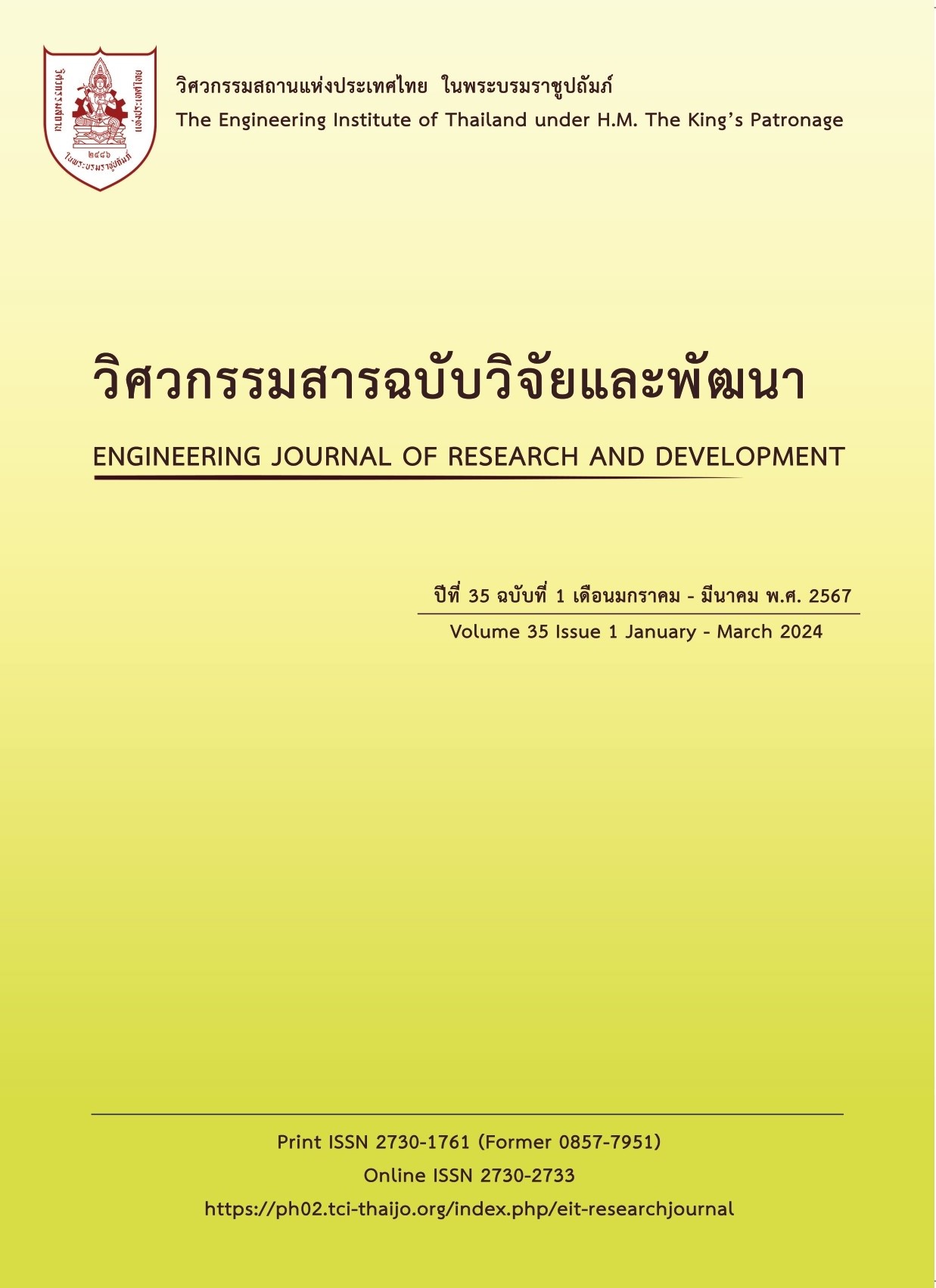SEISMIC SITE CLASSIFICATION OF NAN CITY, NORTHERN THAILAND
Main Article Content
Abstract
The primary goal of this study is to generate the NEHRP soil classification map for Nan City using the average shear wave velocity values (Vs(30)) derived from the multichannel analysis of surface wave (MASW) data. The secondary goal is to use the Vs(30) data to create the preliminary site amplification map of the area. For this work, MASW data were acquired at 36 preselected sites in the Nan City area. After generating the NEHRP map, it is found that soil class D is present mostly in the central and southeast part of the area, while soil class C is found mainly in the western, eastern, and southern parts. A major part of the city is located on soil class D. The soil amplification map indicates higher amplification in the central and southeast part of the city, where the soil consisted mainly of soft sediments from the alluvial plain and the river terrace. The western, eastern, and southern parts of Nan City had a relatively low amplification, perhaps because the sediment in this part is relatively thin or the bedrock is shallow. The results of the study imply that the major part of Nan city may experience earthquake ground shaking due to amplification of the soft soils.
Article Details

This work is licensed under a Creative Commons Attribution-NonCommercial-NoDerivatives 4.0 International License.
The published articles are copyright of the Engineering Journal of Research and Development, The Engineering Institute of Thailand Under H.M. The King's Patronage (EIT).
References
BSSC, NEHRP Recommended Provision for Seismic Regulations for New Buildings, Part 1-Provison, Washington D.C,1997, p 337.
Field, E. H. and the SCEC Phase III Working Group, Accounting for site effects in probabilistic seismic hazard analyses of southern California: Overview of the SCEC Phase III Report. Bulletin of Seismological Society of America. 90(6B), 2000.
Anderson, J. G., Lee, Y., Zeng, Y. and Day, S. Control of strong motion by the 30 meters. Bulletin of the Seismological Society of America. 1996, 86(6), pp.1749–1759.
Boore, D. M. and Atkinson, G. M, NGA ground motion relations for the geometric mean horizontal component of peak and spectral ground motion parameters. Pacific Earthquake Engineering Research Center, Berkeley, California (PEER 2007/01,110 pp.), 2007.
Borcherdt, R. D. Estimates of site-dependent response spectra for design (methodology and justification). Earthquake Spectra. 1994, 10, pp.617–653.
Joyner, W. B., Fumal, T. E. and Glassmoyer, G. 1994. Empirical spectral response ratios for strong motion data from the 1989 Loma Prieta, California, earthquake. Proceedings of 1992 NCEER/SEAOC/BSSC Workshop on Site Response during Earthquake and Seismic Code Provisions, 1992. National Center for Earthquake Engineering Research, Special Publication NCEER-94-SP01, Buffalo, New York.
Midorikawa, S. Prediction of isoseismal map in Kanto Plain due to hypothetical earthquake. Journal of Structural Dynamics. 1987, 33B, pp. 43–48.
Fenton, C. H., Charusiri, P. and Wood, A. H. Recent paleoseismic investigations in Northern and Western Thailand. Annals of Geophysics. 2003, 46(5), pp. 957–981.
Park, C. B., Miller, R. D. and Xia, J. Multi-channel analysis of surface waves. Geophysics. 1999, 64, pp. 800–807.


